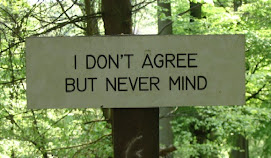No, that's not what 'Ground Anchor' means . . .
This page brings together several sections on motorcycle security previously published as separate posts.
Deter - stop the attempted theft before it’s started
Prevent - slow the thief
Notify - Use equipment which will attract attention - either to the intruder or to the theft.
Recover - Post theft, help the police to locate the vehicle or identify parts if it has been 'broken'
Deter - stop the attempted theft before it’s started
Options include:
- Apply visible markings so that the thief knows the bike will be more dificult to dispose of - even if broken to its component parts.
- Keep the bike in a garage or shed. This means the thief can't see the bike or any additional security measures you use.
- If you can't keep your bke in a building, consider using a cover to hide the bike from sight.
- If possible, park in 'observed' area - overlooked by windows or CCTV
- Use high-quality security equipment that a thief will recognise as difficult to remove
- PIR-operated lights
Prevent - slow the thief
Use devices which will cause the thief unacceptable delay, and ensure noisy 'breaking' methods required:
Lock - Disklock, chain, ground anchor/rail/other bike's chain (NB if your bike is in a wooden shed, how easy is it to remove any restraint or anchoring? Also, do you store all your tools in the same building with the secured bike?) 'Cable' locks are of little use as they can easily be cut, and light-weight chains can easily be cropped. Even substantial U-locks can be broken. Be wary of any cheap lock, or any lock which has plastic pieces on the housing, or which has cast sections - this can easily be shattered.
Immobilisers are fitted as standard to some bikes, and can be retro-fitted to others. They're an over-ride which stops the ignition from being hot-wired to be ridden away, but they won't stop a van being used to transprt a bike away.
Ground anchors are usually designed to be 'sunk' in to the ground and concreted in place. If you are unable to fix a ground anchor (perhaps in rented accomodation) a simple, cheap, option is the 'bucket-o-crete' - a cheap plastic storage crate filled with concrete and steel, and with a tube through which a heavy chain can be threaded.
Notify Use equipment which will attract attention - either to the intruder or to the theft
Alarms can atract attention over the immediate area - but may be ignored. Some alarms have a 'pager' and give a remote warning of the theft, some dial your miobile phone. As with immobilisers, unsecured bikes can quickly be put in to vans for removal - which will dampen down much of an alarm's siren.
If you keep your bike in an outbuilding or shed there are options available:
NB With anything that notifies you your bike is being tampered with, what will you do when you get the warning? Do you intend to tackle the thieves yourself before the police arrive?
Recover: Post theft, help the police to locate the vehicle or identify parts if it has been 'broken'
Tracking - allow police to locate vehicle (and poss. thieves). Various electronic devices can be hidden on your bike which allow the bike to be tracked if stolen.
Tagging - hidden marking e.g. transponders such as 'DataTag'.
Marking - obvious indelible marking of parts. This can be invisible marking such as UV-visible paint or 'Smartwater', or visible marking which can be done easily using letter stamps, or by scratching markings in to plastic panels (paint them with fluorescent paint as an extra deterent. If your bike has any 'distinguishing features', keep a note of them.
The majority of bikes are stolen from the rider's home - but that may not be the only place you park, so you may need to consider how portable your security choices are. The most crop-resistant chains are constructed from 16mm steel - but are not the lightest to carry with you. Try to remove the 'weakest link' from your security - there's little point in using a really strong chain and lock if the chain doesn't secure your bike to anything, or secures it to something which can easily be cropped instead.
Alarms can atract attention over the immediate area - but may be ignored. Some alarms have a 'pager' and give a remote warning of the theft, some dial your miobile phone. As with immobilisers, unsecured bikes can quickly be put in to vans for removal - which will dampen down much of an alarm's siren.
- With a mains electricity supply, alarms are available which will send a signal through the mains to sound a warning inside your home. Remember that mains lighting and tools could be a great help to a thief if you're unaware of their presence . . .
- Alternatively, battery-powered baby monitors could be used in non-mains locations.
.





